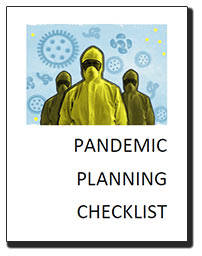Why Disaster Recovery Business Continuity Plans Fail
Almost 30 percent of DRPs and BCPs fail when the are activated
One of the primary reasons why disaster recovery and business continuity plans fall short when they are needed is the failure to test and train staff in how to use the plan. The reasons for this are many, and include:
- Cost - There may be a view in the organization that time taken up in business continuity testing and exercising is unproductive time and therefore an unnecessary cost that can be avoided. There may also be reluctance to invest in external consultants to help facilitate tests.
- Organizational Inertia - Getting a group of busy executives and managers to commit their time is a difficulty in its own right; but getting all the required participants to agree on a convenient time and date can be an administrative nightmare.
- Lack of top-management commitment - If top-managers view business continuity as a box-ticking exercise or if they simply don't fully understand the importance of a fully tested and well exercised business continuity plan, then senior management will probably not provide the arm-twisting support that business continuity managers need to get tests off the ground.
- Failure to comply with mandated requirements - Many regulations stipulate that compliance requires a business continuity plan to be in existence. But they don't often include proof of testing and exercising activities within the scope of the regulations. This is an area where improvement could bring large benefits. Similarly when contracting organizations ask suppliers to provide evidence of business continuity plans, they don't often ask to see details of the tests and exercises that are carried out. Doing so would help testing and exercising move up the priority ladder.
- Poor structure of previous tests - If an organization runs tests and exercises which are badly structured, boring or un-realistic (meteorite landing on head office at the same time as a pandemic etc. ) then participation in subsequent tests and exercises will plummet.
- Belief that testing and training is too hard to do adequately - Reports of training, testing and exercising sometimes being difficult to achieve create a perception that it will always be less than adequate. This results in the area being shelved in the ‘one day' tray rather than on the ‘must do' list.
- Fear of failure - One of the points of business continuity tests is to discover weak areas in plans and strategies. However, if an organization has a blame culture then it may be perceived that the business continuity manager has failed because the plan is shown not to be perfect. Who would want to place themselves under such a harsh spotlight?
Order DRP BCP Template DRP BCP Sample
All of these steps are defined with the Janco's "Disaster Recovery - Business Continuity Template".






